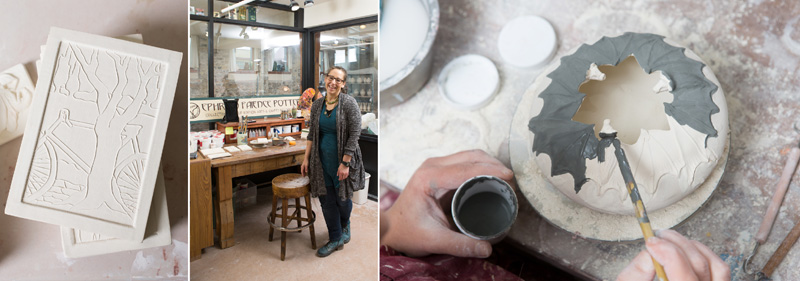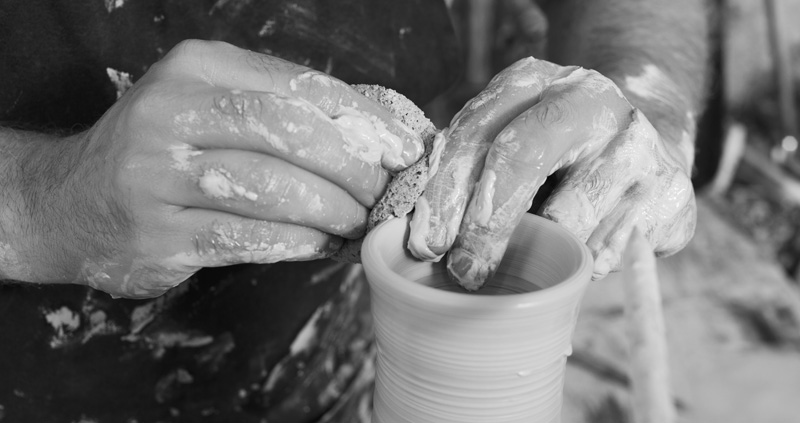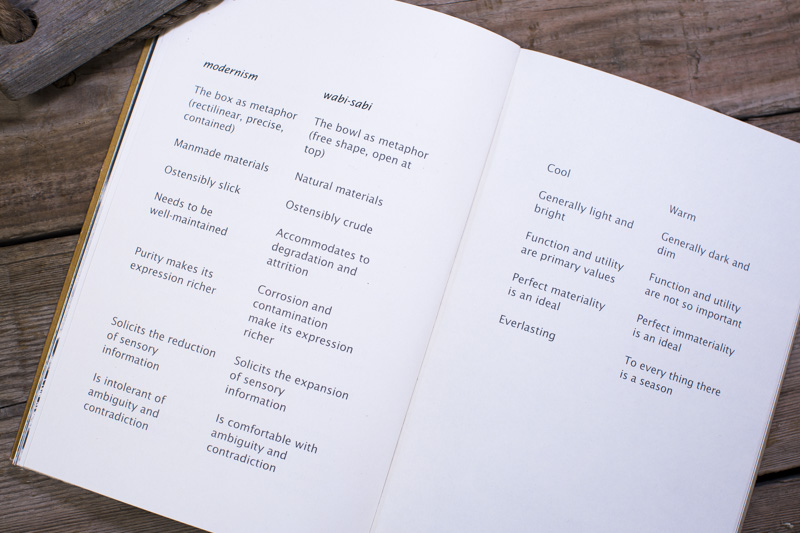Artist, Leah Purisch’s, Blog entry #1 – Wabi-Sabi

Koren describes wabi-sabi as a ‘comprehensive aesthetic system’ that emphasizes the ‘beauty of things imperfect, impermanent, and incomplete.’ Whereas Western aesthetic ideals are centered around the concept of perfection, Japanese aesthetics revere transient beauty.
He illustrates the differences between the East and West aesthetic systems by contrasting Modernism with wabi-sabi. While Modernism embraces the mass produced & the modular, the future-oriented & progressive, the machine & manmade, cool tones & geometric, hard edged forms; wabi-sabi prefers the one-of-a-kind & the varied, present states of existence, natural materials, warm tones, and organic forms.
Koren’s contrast here led me to realize that in many ways we are striving for wabi-sabi at Ephraim. Kevin Hicks, Ephraim’s founder and master potter, describes Ephraim’s aesthetic:
“Above all Ephraim’s aesthetic is one where the hand of the maker is evident. Each piece can have its own style, but the pieces are unified by the process of being hand thrown, sculpted and finished with our in-house designed glazes. We purposely lean away from technologies that remove the artists’ hands from the work such as slip casting, use of moulds, ram-pressing, and computer-aided transfer methods.”


In the last part of the book Koren lays out the material qualities of wabi-sabi. Of the features he writes about – simplicity – struck me the most. Simplicity is something with which I personally have a strained relationship. I enjoy art and surroundings that are uncluttered and un-busy; however, not to the extreme of being austere and cold. Our culture of late advocates a minimalism that I find difficult to embrace.
Koren writes:
“Simplicity is at the core of things wabi-sabi. Nothingness, of course, is the ultimate simplicity. But before and after nothingness, simplicity is not so simple…. How do you exercise the restraint that simplicity requires without crossing over into ostentations austerity?….How do you achieve simplicity without inviting boredom?
The simplicity of wabi-sabi is probably best described as the state of grace arrived at by a sober, modest, heartfelt intelligence. The main strategy of this intelligence is economy of means. Pare down to the essence, clean and unencumbered, but don’t sterilize (Things wabi-sabi are emotionally warm, never cold.) Usually this implies a limited palette of materials. It also means keeping conspicuous features to a minimum. But it doesn’t mean removing the invisible connective tissue that somehow binds the elements into a meaningful whole. It also doesn’t mean in any way diminishing something’s ‘interestingness,’ the quality that compels us to look at that something over, and over, and over again.”
For us that ‘connective tissue’ and ‘meaningful whole’ are achieved through the making processes. We strive for ‘interestingness’ with:
- The mastery of techniques that allow us to focus on form and flow;
- The careful observation of nature as we delight in these subtle subject matters;
- The control over the melting and natural character of the minerals in our glazes.
Koren’s book was food for thought on many levels and I would highly recommend it for anyone interested in furthering their insight into the theories behind this very interesting aesthetic.





